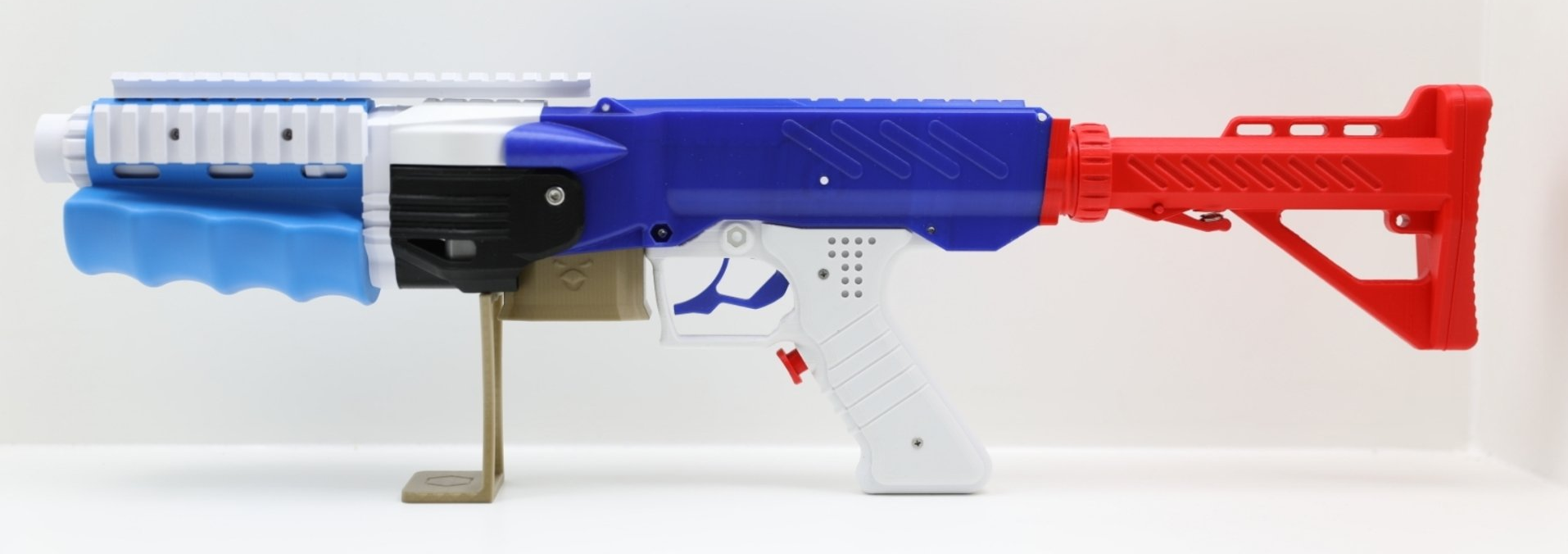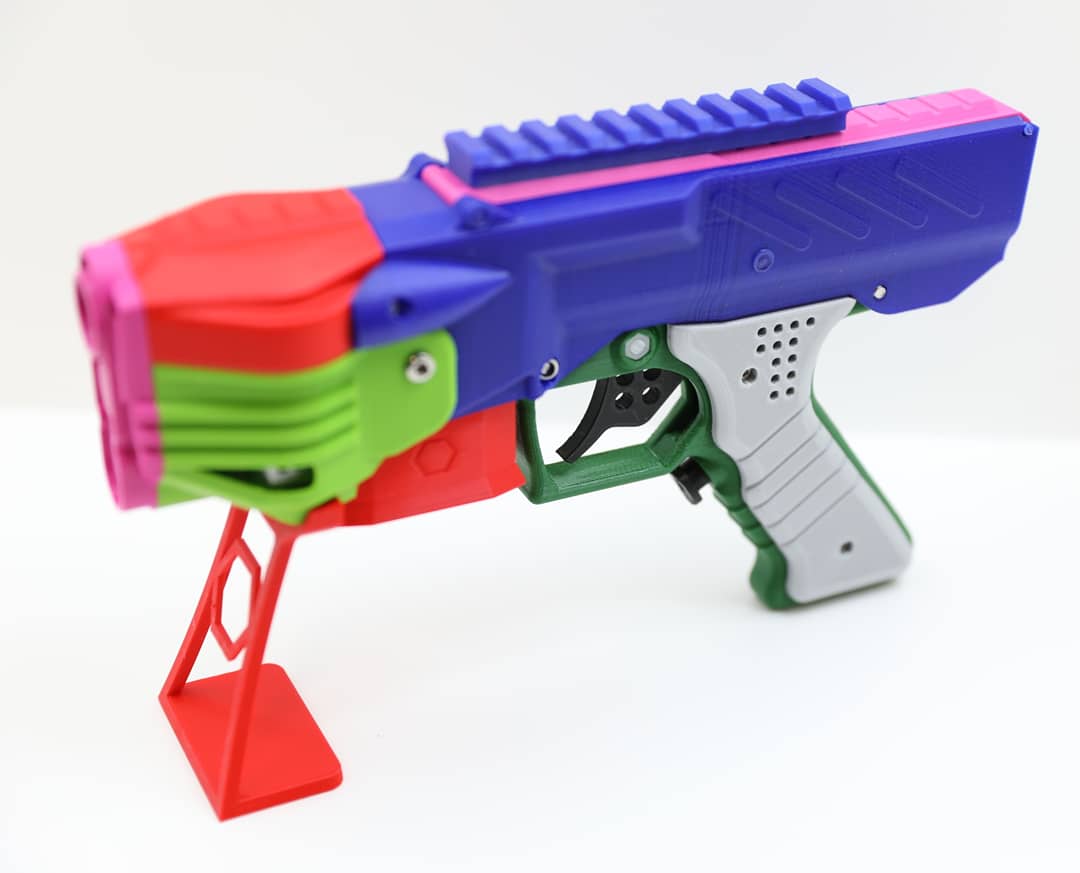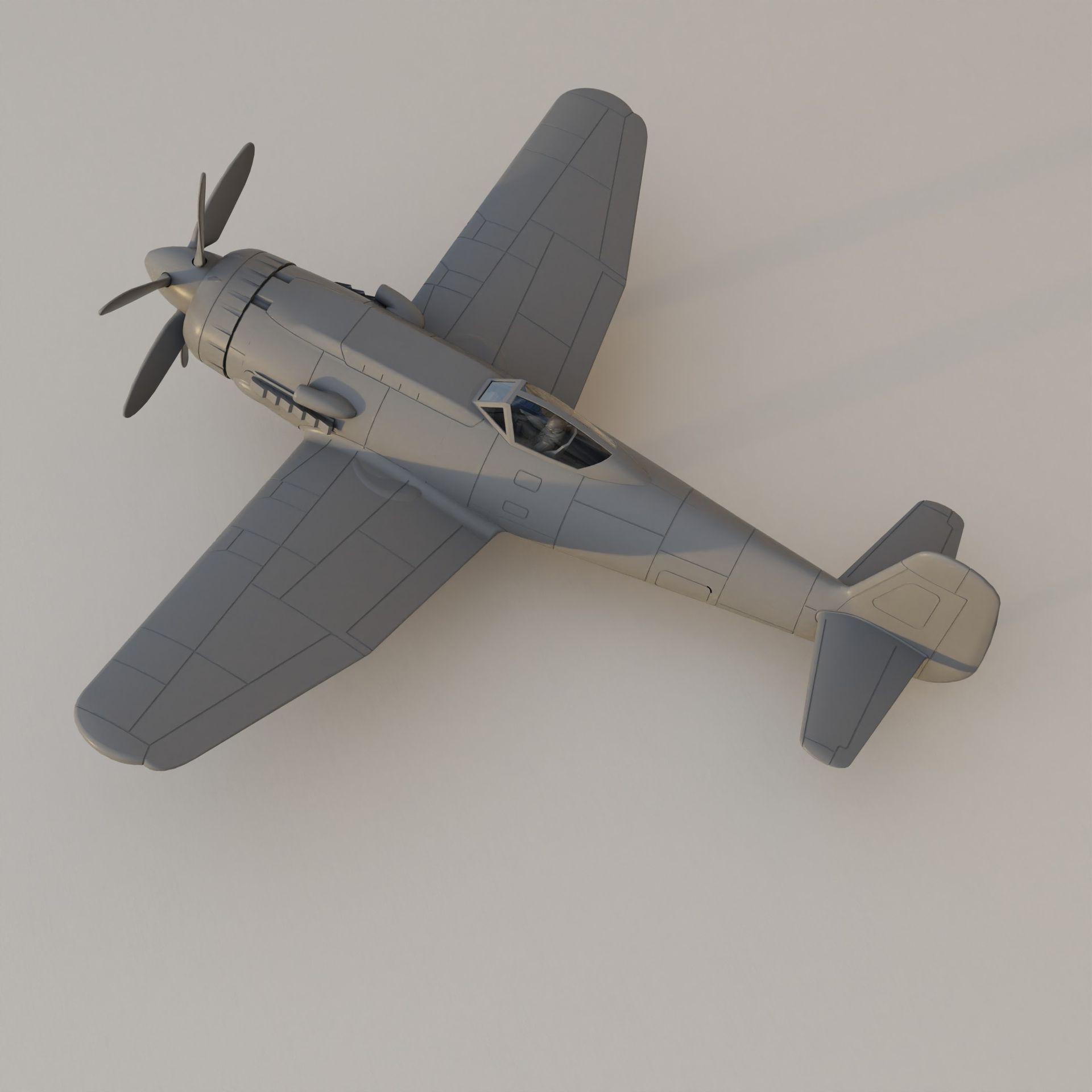Kontakt
info@my3dbase.com
Design philosophy of the NG-2 GOBLIN

The NG-2 GOBLIN was designed in 2019 and basically follows the design philosophy of the original NG-1. But, as always, you learn. So the NG-2 was an effort to reduce the overall complexity of a blaster while optimizing it for easy printing and quick assembly. After all, 3Dprinting is rather scalable by simply investing in new machines. However, post processing, assembly, testing and shipping quickly become bottlenecks in production.
Minimal size was one of the early design drivers. So compared to the NG-1, which has massive 380 motor,, the GOBLIN features 180s. Simplicity was another driver. The choice to keep brushless motors was also a conscious one. Those run directly on DC from any battery. Weight specific power density is somewhat lower compared to brushless motor, but the effect is barely noticeable in this specific application. In contrast, no EMC is required. And, DC motors are readily available in bulk due to the fact that they are used in countless household items. The GOBLIN feature genuine high current switches and large gauge silicon wires.
Instead of full length darts, half length darts were chosen using Talon mags (Katanas proved to be quite unreliable) . The GOBLIN reaches between 120-130 fps max.
In order to cope with potential heat generated by the motors, the entire motor cage of the NG-2 is printed in ABS. This expands the temperature envelope to roughly 100°C.
If the battery is empty, no tools are required to remove it. A large lid grants direct access to the battery compartment. We use a 2s lipo measuring 58x30x15 mm. Both the 'Graphene 2s 950mAh 65c' from Outofdarts and the 'Turnigy Graphene Panther 1000mAh 2s 75c' from Hobbyking also fit. The GOBLIN is equipped with an XT-60 connector.
Another advantage of 3D printing is the fact that it allows us to use a lot of different colors and combine them in many different ways. For that purpose we prepared a color picker here.
The overall design has been kept highly modular. A dual cage version (DC) of the GOBLIN boosts fps to about 150. This is accomplished with a slightly longer nose that houses 4 motors.
Lately we added some accessories to the NG-2. Among those is an adjustable stock and fore grip.
The GOBLIN is available from our online store
or ETSY.
Damit Eure Kekse mit unseren Backförmchen so richtig gut funktionieren haben wir für euch ein paar Tips zusammengestellt. Vorab einmal das Rezept: 100 g Butter 50 g Puderzucker (kann dem eigenen Geschmack angepasst werden) 30 g Ei 200 g Mehl Die Mengen können unter Einhaltung des Mischungsverhältnisses erhöht werden. Zunächst wird der Puderzucker mit der Butter vermengt. Danach wir das Ei hinzugegeben. Anschließend wird das Mehl untergehoben. Wichtig: Damit der Teig die richtige Konsistenz erhält sollte er gekühlt werden; ca 30min im Gefrierfach oder 1-2 Stunden im Kühlschrank.

We use 3D printers to produce our products. There are different types of printers and countless different processes. We have specialized in what is sometimes revered to as FFF (fuse filament fabrication). The process is rather cost effective and uses a simple process of depositing a thermoplastic material layer by layer. 3D printing technology used to be locked down by patents for decades, limiting the technology to large and costly machines. Once those patents ran out, a new generation of desktop printers started to emerge. These machines are rather simple in design, but manage to output parts with astounding quality. Also, due to the small investment costs, the process can now be parallelized which has a profund influence on production costs. At the core of all this, is the material. After all, it is the material in combination with a specific design that enables a desired functionality. And today, in 2020, PLA or 'polylactic acid' is one of the most widespread materials in desktop 3D printing. PLA outperforms almost any other material in this category in terms of strength and stiffness (yes, those are two different things ;)). An interesting comparison is published by simplfy3d here . This is especially true if we take into account the directional dependency of the material properties which is introduced by the FFF process. Out of plane strength, i.e. layer adhesion, suffers greatly for most materials. The overall knock down for PLA is relatively low.



















